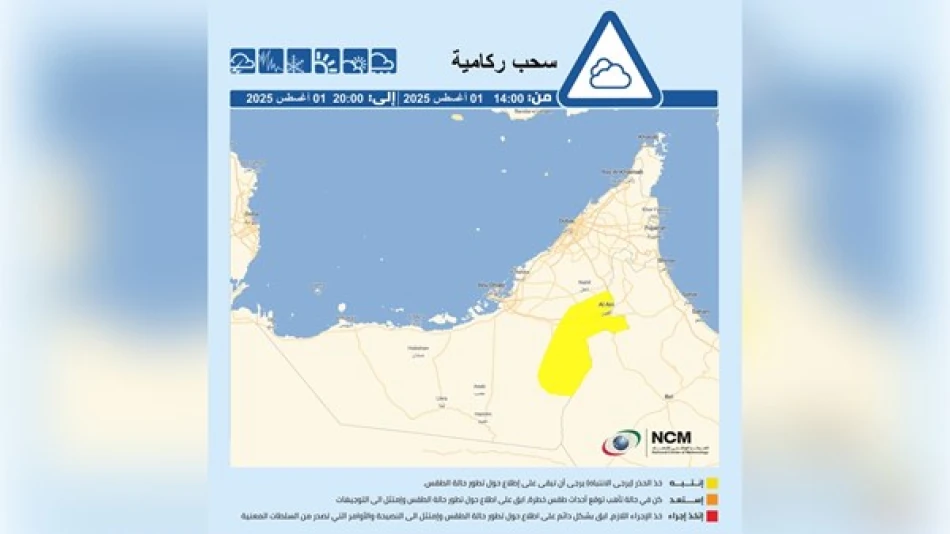
Heavy Clouds Bring Downpours Across the Region Today, Forecasters Warn
UAE Braces for Heavy Storms and Dust Winds as Summer Weather Intensifies
The UAE's National Center of Meteorology has issued warnings for severe weather conditions expected to hit eastern and southern regions on Friday, with powerful storms bringing rain, strong winds up to 45 km/h, and dust clouds that could significantly reduce visibility. The weather event, scheduled between 2:00 PM and 8:00 PM on August 1, 2025, highlights the increasingly volatile summer weather patterns affecting the Gulf region.
Storm Details and Regional Impact
According to the meteorological forecast, cumulus clouds will form across targeted areas, accompanied by active to strong winds that will stir up dust and sand particles. The combination of rainfall and dust storms poses particular challenges for the UAE's infrastructure and daily operations, with horizontal visibility expected to drop dramatically in affected zones.
The eastern and southern regions, which include key economic centers and transportation corridors, face the most significant impact. These areas often serve as critical links between the UAE's major cities and neighboring countries, making weather disruptions particularly consequential for regional commerce.
Economic and Operational Implications
Transportation and Logistics Concerns
The timing of the weather event during peak afternoon and evening hours could disrupt both domestic and international transportation networks. Dubai and Abu Dhabi's airports, among the world's busiest aviation hubs, typically implement precautionary measures during such weather conditions, potentially affecting flight schedules and cargo operations.
The UAE's position as a regional logistics hub means that weather-related delays can have ripple effects across supply chains serving the broader Middle East and South Asia markets.
Energy and Construction Sectors
The construction industry, a cornerstone of the UAE's economy, often adjusts operations during severe weather events to ensure worker safety and protect ongoing projects. Similarly, the country's renewable energy installations, particularly solar farms in desert regions, may experience temporary efficiency reductions due to dust accumulation.
Regional Weather Patterns and Climate Context
This weather forecast reflects broader climatic trends affecting the Arabian Peninsula during summer months. The UAE's location between the Arabian Desert and the Persian Gulf creates unique meteorological conditions where rapid temperature changes can generate intense, localized storm systems.
Compared to neighboring countries like Saudi Arabia and Oman, the UAE's compact geography means weather events can quickly impact multiple emirates simultaneously, requiring coordinated response efforts across the federation.
Preparedness and Public Safety Measures
The National Center of Meteorology's advance warning system demonstrates the UAE's sophisticated approach to weather monitoring, utilizing advanced radar technology and satellite imagery to provide precise timing and location data. This level of meteorological precision has become increasingly important as the country's population and economic activities have expanded into previously less developed regions.
The six-hour window specified in the forecast allows businesses, schools, and government agencies to implement contingency plans, reflecting lessons learned from previous severe weather events that have affected the region.
 Layla Al Mansoori
Layla Al Mansoori







